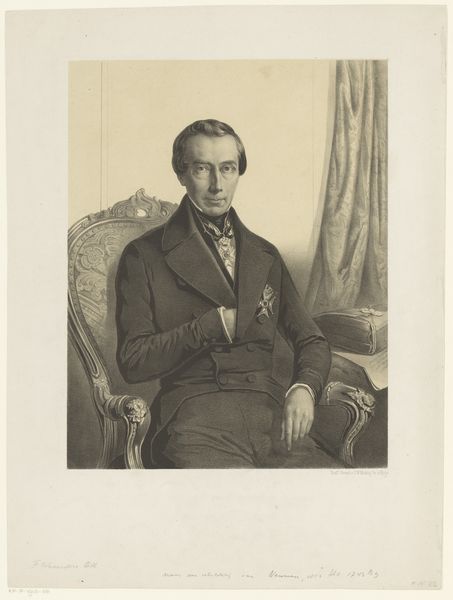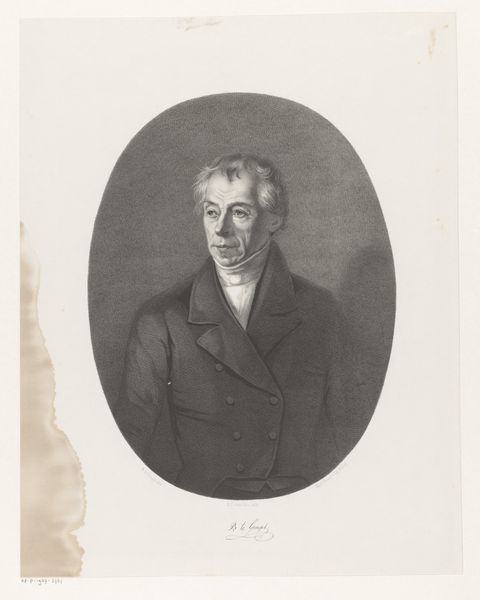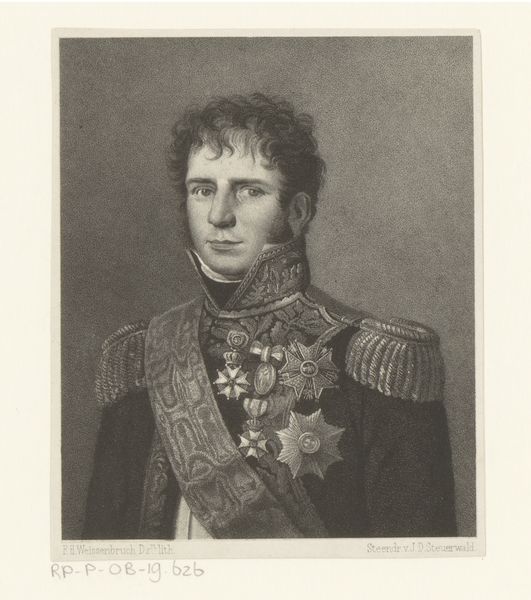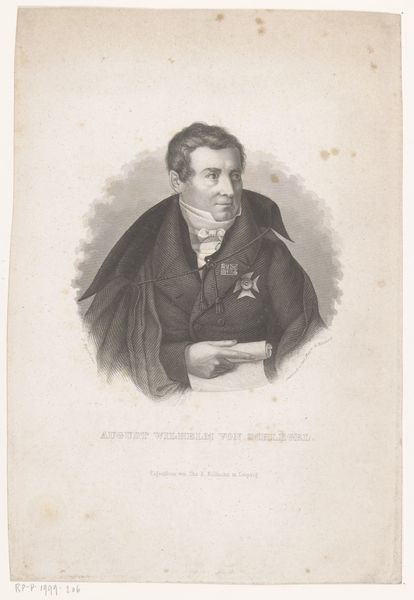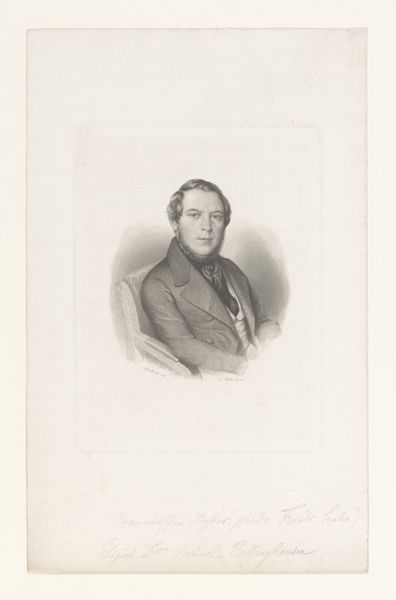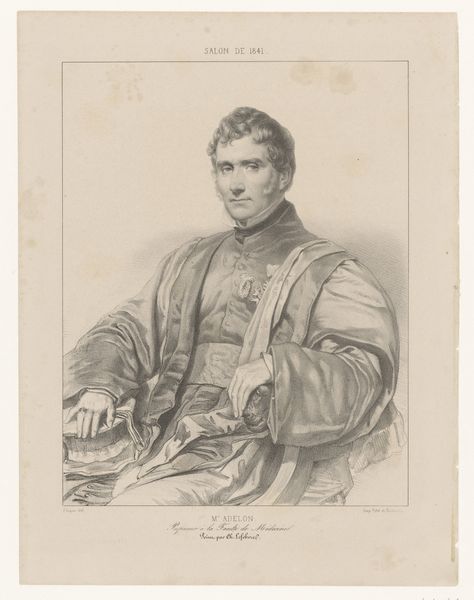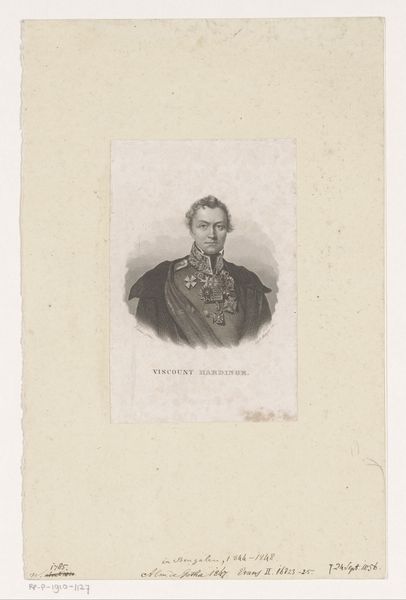
drawing, print
#
portrait
#
drawing
# print
#
historical photography
#
19th century
#
line
#
academic-art
#
fine art portrait
#
realism
Dimensions: height 433 mm, width 327 mm
Copyright: Rijks Museum: Open Domain
Curator: Standing before us, we have a portrait by Charles Louis Bazin. The title reads "Portret van de econoom César Moreau," dating roughly between 1818 and 1852. It’s rendered as a print, demonstrating beautiful draftsmanship and attention to detail. Editor: Right, and my first impression? Stern! Very competent, and definitely aware he's someone important. The monochrome palette really amplifies that serious tone, doesn't it? Curator: It does indeed. Bazin uses line work to convey a remarkable sense of realism. The portrait offers a window into the sitter’s character—an economist, you see—but also, a glimpse into the societal values around prominence and civic responsibility during that period. Look at the medals he proudly wears; those are markers of recognition within political circles and his accomplishments. Editor: And that's interesting because beyond the sitter’s clothing choices that signify his elite status, the artist made choices. The drape and sheen feel so tangible… Did the original have any tint or it’s solely monochromatic as we see it here? It emphasizes structure over sentiment, doesn’t it? There's a lack of frivolity. Curator: As a print, it most likely would've begun its life monochromatic. Bazin focused on meticulously detailing his sitter’s garments. We can infer status through this attention to finery rather than bright pigment; in rendering César Moreau, a figure invested in matters of society, within stark parameters of fine academic artwork from its period we recognize society at that time. Editor: Exactly! We have that tension present with this choice; not particularly imaginative with colour, yet expressive and rich with intention! I can see him. It gives off a pragmatic feel, but one where it seems the city dweller lives. The seriousness translates powerfully, actually. Curator: Perhaps in that, we are seeing a social reflection rendered with an undeniable artist precision of its moment. There were things at stake there in 19th-century economics that one wouldn't be able to tell otherwise at this juncture, that a printmaking like this would bring up, maybe? Editor: Right—almost a quiet understanding captured beautifully by a line drawing of then societal, even economic standards! Powerful!
Comments
No comments
Be the first to comment and join the conversation on the ultimate creative platform.
